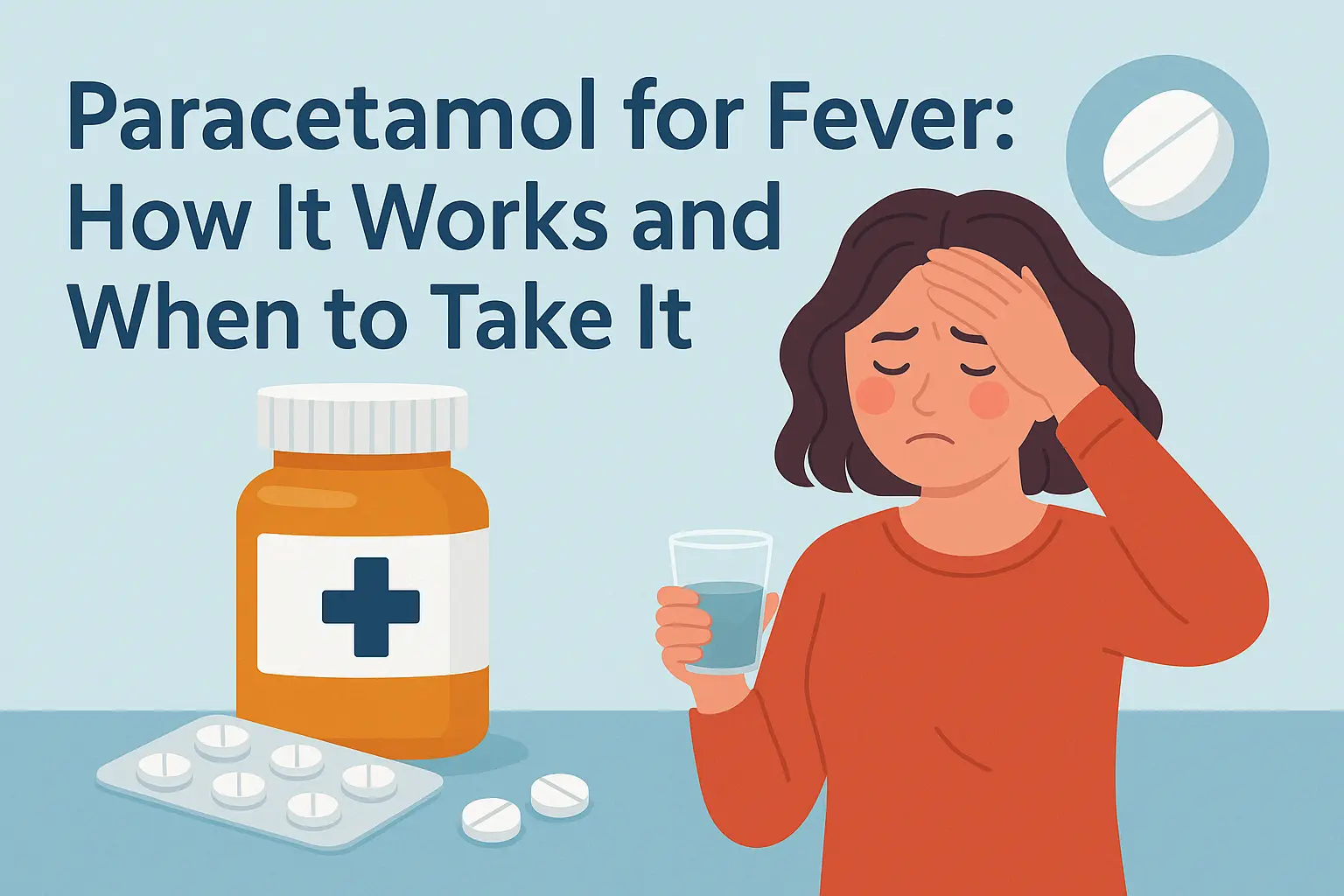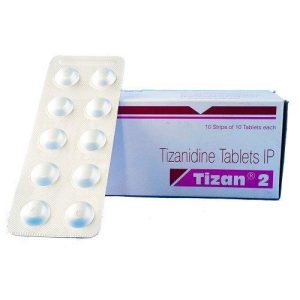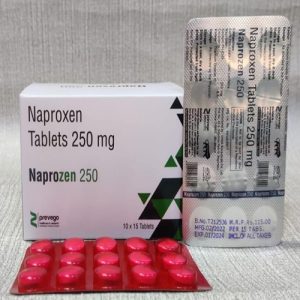Fever is one of the most common signs that the body is fighting an infection or inflammation. Even while a fever normally goes away on its own, it can be uncomfortable and may need medical attention if it lasts a long time or is really high. Acetaminophen, which is often called paracetamol, is one of the most frequent medications for decreasing fever. Paracetamol is a first-line medicine for decreasing fever in both kids and adults since it is safe, works well, and is easy to find.
In this piece, we’ll speak about how paracetamol works, when and how much to take it, safety tips, and when to see a doctor.
What is paracetamol?
People know that paracetamol is a common over-the-counter (OTC) medicine that lowers fevers and eases pain. Paracetamol is not an NSAID like ibuprofen or aspirin. This is a wonderful option for people who can’t take NSAIDs because they make their stomachs hurt or they have other health issues.
It may be taken in a lot of different forms, like as tablets, capsules, syrups, drops, and injections. This means that both adults and kids can use it.
Get and stay hard at 98% less cost!
How does paracetamol help with a fever?
When you have a fever, your body raises its internal temperature to fight off illness. Paracetamol acts by stopping the brain from generating prostaglandins. Prostaglandins tell the body to ache and get hotter. By reducing these signals, paracetamol lowers temperature and relieves pain.
Paracetamol doesn’t suppress inflammation as much as NSAIDs do, so it’s usually used to lessen fever and mild to moderate discomfort instead of conditions that cause swelling.
When is the best time to take paracetamol for a fever?
You should take paracetamol when:
- Your temperature is 100.4°F (38°C) or higher, and it makes you feel bad.
- You also have additional symptoms, such chills, headaches, or muscle aches.
- Kids with a fever may be irritable, restless, and not want to eat or drink.
- You can’t rest or sleep because your body temperature is too high.
Important: You don’t always require drugs if you have a fever. If your temperature isn’t too high and you feel fine, you might not need paracetamol right away. Sometimes, all you need to do is relax and drink water.
Recommended Dose of Paracetamol
How much paracetamol you should take depends on your age, weight, and the kind of paracetamol you are taking. Always follow the instructions on the packaging or consult to a doctor.
For adults:
- Take 500 mg to 1000 mg every 4 to 6 hours if you need it.
- The most you can take in a day is 4 grams (4000 mg).
For Kids:
- The dose is usually dependent on weight, which is 10 to 15 mg per kg.
- You can give it every four to six hours, but not more than four times a day.
- Use pediatric syrups or drops for newborns and young kids.
Don’t take more than the recommended dose because an overdose can gravely damage your liver.
How Long Does It Take for Paracetamol to Start Working?
Taking paracetamol normally starts to act between 30 minutes and 1 hour after you take it. The effect normally lasts for 4 to 6 hours, however this can change depending on the dose and the person’s metabolism.
How to Be Safe While Taking Paracetamol
Paracetamol is usually safe, but there are several things you should do to keep safe:
- Adults shouldn’t consume more than 4 grams a day.
- Don’t mix paracetamol with other medicines that include acetaminophen, like cold and flu drugs.
- Anyone who has liver disease, drinks alcohol for a long time, or is malnourished should visit a doctor before taking.
- If you are pregnant or nursing, you should only use paracetamol if your doctor says it’s okay.
- Keep syrups and drops out of youngsters’ reach so they don’t mistakenly take too much.
When to See a Doctor
Paracetamol can help with a fever, but sometimes you need to consult a doctor. If you have any of the following, you should see a doctor:
- You have a fever that won’t go away even after taking paracetamol for three days.
- Adults’ temperatures go up to 103°F (39.4°C) or higher, and kids’ temperatures go up to 102°F (38.9°C) or higher.
- The patient is having trouble breathing, chest pain, a bad headache, or confusion.
- Infants under 3 months of age have a fever.
- A rash, a stiff neck, vomiting that won’t stop, or dehydration are all indicators of a serious infection.
Other Options and Additional Steps
- Along with taking paracetamol, the following steps can help lower a fever naturally:
- Drink a lot of fluids to stay hydrated.
- Get enough rest so your body can heal.
- Dress lightly and keep the room cool.
- Put a cold compress on your forehead.
Some doctors may suggest ibuprofen as a substitute or in conjunction with paracetamol, contingent upon age and health condition.
Last thoughts
When taken correctly, paracetamol is still one of the safest and most effective drugs for lowering a fever. It lowers the body’s warmth and eases pain, which makes recuperation easier. But it’s important to take it responsibly because taking too much can seriously harm your liver, and not all fevers need medicine.
If the fever doesn’t go away or gets worse, always take the right amount of medicine and consult a doctor. When used correctly, paracetamol is a good way to help with fever and go back to feeling better.




